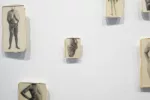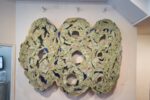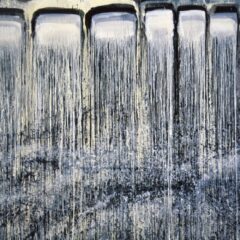
Melanie Schiff, Spit, Lambda Print, 30 x 40, 2006, taken from her website ; ©Melanie Schiff
Here at Artblog we’ve been waiting with bated breath to see how John Caperton will put his mark on exhibits at The Print Center, the venerable organization that dates back to 1915.
We were astonished by the choice, not because Caperton isn’t great. After all, here are a few of his independent curatorial projects in Philadelphia:
- Cathartic Disgust Gestalt at the late, lamented Project Room, featuring work by Tristin Lowe, Charles Burns, Philip Mott and Robert Beck. Think vomit materialized.
- I Saw the Light, also at the Project Room, in which the religious phrase gets a post-modern material exploration. The artists in the show were Richard Harrod, Rob Matthews, and Richard Torchia.
- Love the One You’re With, at Vox, which included work from Justine Kurland, Jim Hinz, Virgil Marti, etc., in a sort of post-romantic Valentine.
We just wondered how he would fit in with an organization that has always been a bastion of artistic politesse.
The breaking news
Caperton has unveiled his first Print Center Project, which reaffirms his taste in contemporary art–photographers Melanie Schiff and Gillian Pears–whose quirky explorations of the idea of the body have zippo to do with traditional nudes and female compliance.
The other breaking news
I talked to Caperton a few weeks ago, and he’s a gentle soul, not looking to rock any boats with his choices, just trying to figure out how to fulfill The Print Center’s mission the best way possible–by bringing it his contemporary curatorial vision.
Here’s what he had to say:
L. How are things going?
J. I’ve been here four months now. The Starns’ show was very well attended. Every photography professor brought classes by. Penn critical writing classes also came. Students and teachers are part of our core mission.
It’s very different from Locks Gallery [Caperton worked there most recently as exhibitions coordinator].
Jacqueline van Rhyn was the first person hired as curator of The Print Center. Previously, the director and the board worked on the exhibitions. When she came, there was carpeting on the floor and print storage on shelves.

Photo courtesy of Print Center; Part of exhibit, Taken With Time; all photos in exhibit commissioned for the exhibit and taken in Philadelphia
©Abelardo Morell, 2006
Under her, there were two PEI grants–
- Imprint, 2002, which brought art into public spaces. The artists, local and national, were Virgil Marti, Kerry James Marshall, Dotty Attie, John Coplans, James Mills, and Susan Fenton. Co-curated with Joan Wadleigh Curran, the project put imprinted art on coffee cups, billboards, the newspaper, etc.].
- and Taken with Time, 2006 (see posts by libby and by roberta).
L. Will your imprint here differ from your past and The Print Center’s past?
J. I don’t think The Print Center would have hired me if they weren’t interested in the sorts of things that interest me. I am just starting work on specific projects. I want to do a combination of local and international artists with quirky themes, and focus more on emerging artists. I’m thinking about things like Space 1026 — they’re going to have their first Museum type show in the next few weeks [that was the PopRally show that has already happened since I spoke with Caperton].
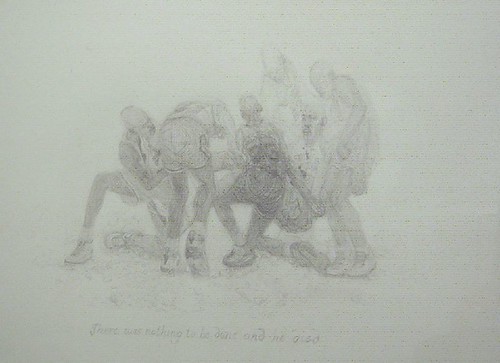
Norm Paris, there was nothing to be done and he died (after Goya)
I’m very committed to printmaking and photography, and beyond that the sky’s the limit. I’m thinking about what printmaking can mean, from sculpture to zines and any other forms. I’m also thinking about Japanese wood blocks–the masters of it and the artists influenced by it; or about Norm Paris and the way he uses the history of printmaking, and Goya; also, silk screen and alternative culture in the ’60s.
Starting in September there are some holes in the schedule that I will be filling and then 2009.
L. So, did you suffer from culture shock when you came here as compared to when you worked at Locks Gallery?
J. I was startled by how public the job is here–I’m representing the organization, giving tours and talks. At Locks, I was more sheltered.
But there’s a flip side. At Locks, we had a relationship with the artist doing an exhibition. It was a more intense relationship at Locks–it takes years, decades, to build up that relationship.
We do 20 exhibits here a year with at least 10 different artists, most of which won’t show here again.
Being a curator, you kind of take your work with you wherever you go. Alex Baker, his work kind of went with him when he left PAFA.
That’s the riddle here for me–figuring out how to capitalize on that mission, how to do really exciting, interesting shows here and have that be wrapped up with the organization as well.
One thing we are not doing here–mixing contemporary art with actual historic work. There’s a lot here in Philadelphia–
The Library Company, what they have there is amazing, newsletters, letterpress stuff with different size fonts all on one page.
The Temple Urban Archives.
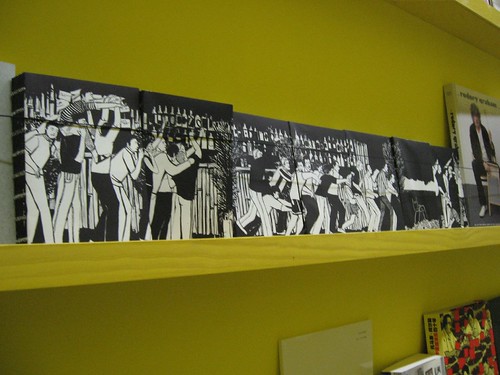
detail from the Beyond Kiosk installation of artists’ books at the ICA right now
There’s so much in Philadelphia. I’m interested in digging backward as well as forward. Our mission is showing printmaking and photography. It’s nice having something so clear. We have a lot of overlap with other organizations. The ICA ramp project, Beyond Kiosk, the Fabric Workshop wallpaper show. It would have been a perfect show for us. I have to feel envious.
In my mind, the most interesting part is the problem solving, the free rein of being curator. If nobody comes, who cares? If nobody writes about it, who cares. If it has no impact on the artist’s career…
L. Who do you admire in Philadelphia?
J. I love Sid’s shows. That’s an excample of a curator who’s directing a gallery [Sid Sachs at Rosenwald-Wolf Gallery at UArts]. He has a great sense of humor in how he presents things. My mentor, Richard Torchia [at Arcadia University], he’s a role model for me of how a curator should work. Others I have a lot of respect for–Shelley Langdale and the Philadelphia Museum of Art and her show on the history of screen printing. She’s a real scholar in a lively sense. Another person I admire is Becky Kerlin [at Gallery Joe]–she found a niche and operates in that niche that she’s really excelled at. They do great shows. If you bought one piece form each show, you’d have an amazing collection!
L. How are you going to incorporate your sense of humor here?
J. It will be interesting to see how it plays out. It will definitely be reflected thematically in things. I’m not sure I’ve completely grown up.
L. How’d you come to be in Philadelphia?
J. I’m from Richmond, Va. and studied art history at the University of Chicago. I went back to Richmond–I worked at the art gallery at Virginia Commonwealth University. Then I got a job at Locks Gallery before I came up here. [Here’s his bio on The Print Center site].
L. You’ve been in the for-profit and non-profit art worlds. Do you see differences between how things are done?
J. Outside New york, there’s some disconnect between the gallery scene and non-profit galleries. In New York, there’s much more of holding each others’ hands and collaborating.
There’s a discomfort within Philadelphia–a feeling that there should be a clear separation between the two [the non-profit and the commercial galleries].
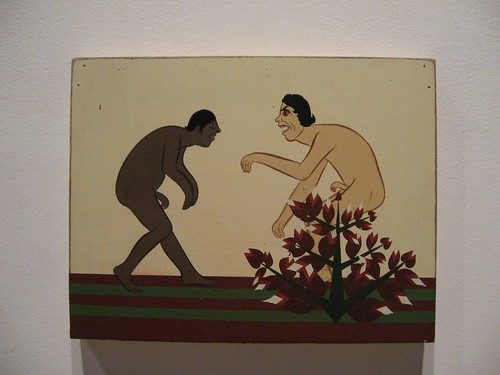
It was geat working for the for-profit art world. My one experience, at Locks, Sue Yun [Locks] is going to question every single motion made in the gallery in terms of its value in every regard–value in terms of money and also in terms of what she’s going to get from it. Every single exhibition there, she’d question every single aspect of what they’re doing there.
That’s also becoming more and more so in the non-profit world. The board is having to raise money, so you’re always having the question, why are you doing what you’re doing?
L. Can you talk a little about the print market, while we’re talking about money?
J. Printmaking has changed dramatically. In New York, in the ’80s, every major painter created large technical prints selling for a huge amount of money. There was an incredible bubble that the print market experienced – internationally, not locally. At that time prices for blue chip artists’ prints were very volatile and some prints would sell for more than paintings by those artists.
Then the market collapsed and there is believed to be some kind of connection between money laundering and the craziness of the market at that time.
The market for Chinese contemporary art is definitely as crazy as the print market was then – and you have to wonder why – but I haven’t read anything about it being linked to specific shenanigans.
L. And in Philadelphia?
J. Philadelphia has had a huge role–The Saturday Evening Post, Thomas Paine, Benjamin Franklin. It has always been a center of printmaking in the United States. In Philadelphia, printmaking has been vibrant, going along with social activism. I’m thinking of Space 1026. There are collaborations all around the country like them. They’ve really changed the playing field for printmaking.



